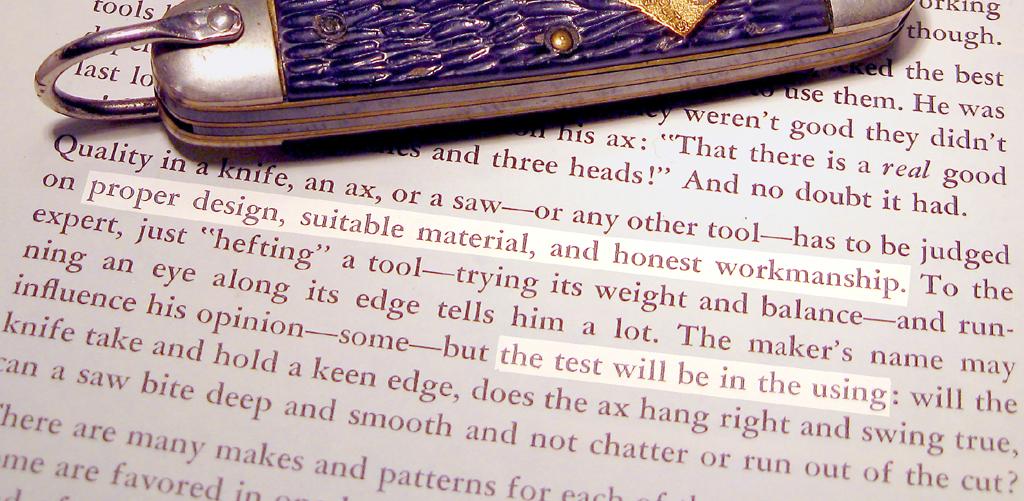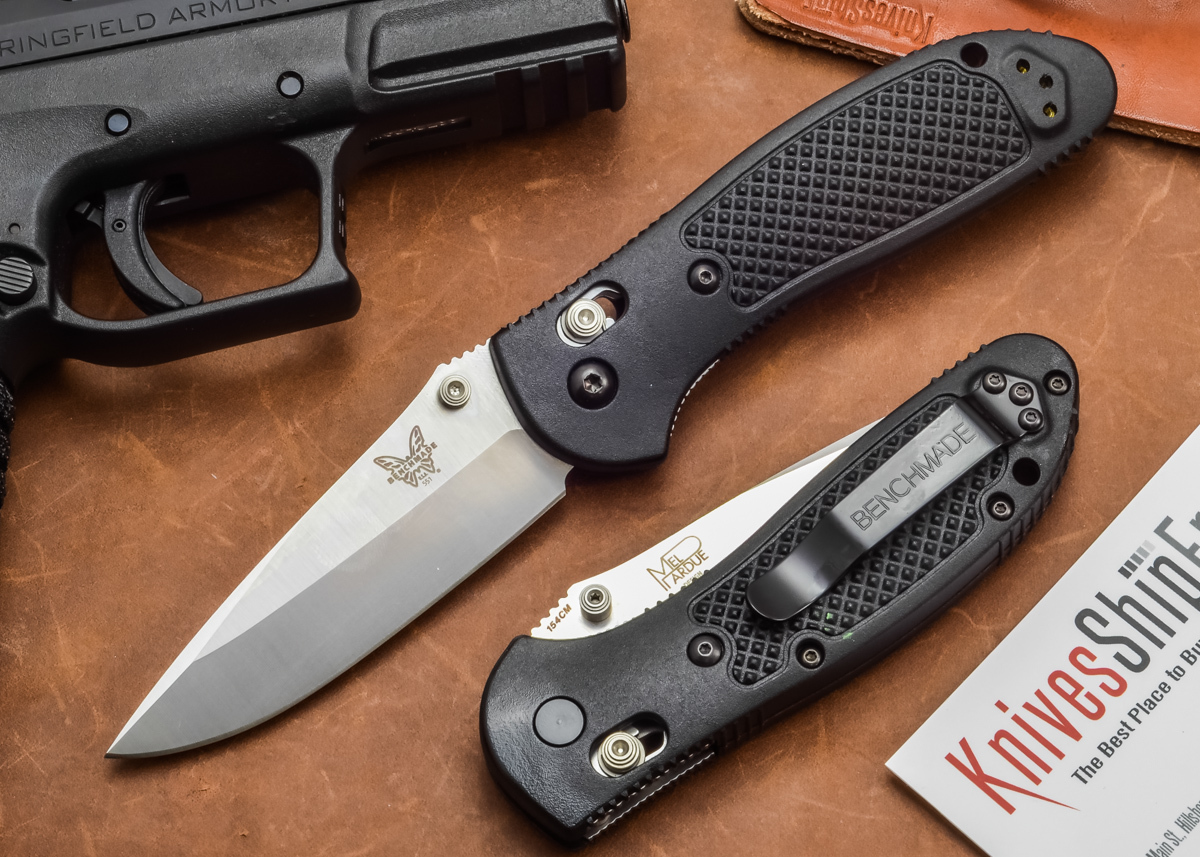How to Choose a Knife
30th Mar 2014
How to choose a knife

Okay, we know what you're thinking -- "How hard can it be to pick out a knife? For cryin' out loud, do I really need instructions for this?"
Truth is, with so many choices available these days, the seemingly simple task of choosing a knife can be pretty intimidating. In this post we'll try to break down the process into a few basic things to consider.
1. What's the point?
Most of us know the pleasure of having "the right tool for the job." And since a knife is a tool, the first thing to think about is the purpose of the knife -- that is, what will you ask it to do?
In answering that question, be as specific as you can. For example, it's not enough to say "I'll use it for work" or "I want a hunting knife" -- the needs of a warehouse manager and an accountant are, obviously, very different. Likewise, a knife suited to field-dressing a deer probably isn't the one you'd choose for fowl.
Start with a clear idea of what duties your knife will perform, and you'll be well on your way to choosing the right tool for the job.
2. Folder or fixed-blade?
On this subject, you probably already have a sense of what you want. After all, everyone knows that fixed-blade knives are for outdoor pursuits, unsuited to everyday carry, and folding knives are for lighter duty -- right?
Not so fast.
Before you limit yourself to one or the other, consider that many small fixed-blade knives can be just as pocketable (with the right sheath) as a traditional slipjoint. What's more, some folders and pocketknives are plenty stout enough for the rough stuff.

3. How will you carry it?
This comes down to personal preference, mostly -- inside a pocket, clipped to a pocket or carried on the belt. Then again, some knives are so large that they'll need to be strapped to the outside of a pack or stowed within.
Decide how you want to carry your knife, then pay attention to specifications (not only length, but also weight) and choose accordingly.
4a. Where will you carry it?
No, we're not repeating ourselves -- this is a different question.
Sadly, some folks don't see knives the way we do. They view knives not as tools but as weapons, an inanimate object to be feared. And when you whip out a spring-assisted tactical folder to slice an apple for your lunch, they freak out.
Maybe you care about their reactions, maybe you don't. Either way, it's worth considering. Toning down your knife to something less likely to induce panic, however, just might save you some paperwork one of these days.
4b. What's the law?
Another sad commentary on today's culture comes in the form of laws forbidding fixed-blade knives (of any length) and limiting folding blades to two inches. One manufacturer even has a knife called the "Chicago."
Sheesh.
Know your local and state laws, okay? (There, we said it.)
5. How convenient do you need your knife to be?
Put another way: When you deploy your knife, do you expect to have both hands available?
If so, then most any type of knife (including traditional slipjoint pocketknives) will work for your purpose. If not, consider either a fixed-blade model, a one-hand-opening folder or a folder with spring-assisted opening.
6. How hard will you work it?
You might suspect that we're repeating another question here -- and yes, it's true (generally) that fixed-blade knives can take more of a beating than knives that are "pre-broken in the middle" (folders, that is) -- but there's much more to it than that.
The demands you expect to place on a knife should prompt you to consider a blade's height, thickness, geometry and grind. The more structurally robust the blade, the more (generally) it'll be able to withstand.
And then there's the matter of steel. (Notice that we've gone this far before mentioning steel.) If you're going to work a knife long and hard, look for steel that boasts good edge-holding and a quality called "toughness" (the tendency for the sharpened edge to "roll" rather than chip). If you intend to use your knife in damp or wet conditions, or near salt water, consider a corrosion-resistant steel (stainless, for example).
Put some thought into the knife's handle, too. You truly won't know how comfortable it is in-hand 'til after you've worked it awhile, but you can tap the experience of other knife people (either in person or via online forums). And if you plan to subject your knife to serious abuse, think about going with a synthetic handle material like Micarta or G-10.

7. How much attention will you pay to maintaining your knife?
Don't get the wrong idea -- we're not calling you lazy. It's just that some people are meticulous about caring for their knives, while other folks...well, not so much.
(You know who you are.)
Look, we believe that you should know how to maintain and sharpen your own knives. We also realize that not everybody does. So if you prefer a less labor-intensive knife that's easy to touch-up, you're probably in the market for a carbon-steel blade -- it may not hold its edge quite as long, but restoring it to shaving-sharpness should be a snap.
Along the same lines, if you're not inclined to wipe your blades clean of oils, food residue and moisture before sheathing or stowing them, stainless steel probably is for you.
8. Choose it and use it. Now, what's the verdict?
If you've stayed with us through those seven steps, you should be ready to make your choice. And once you have your new knife in your hands, the real work -- and the real fun -- begins.
You get to use your knife.
A passage from the 1967 edition of the Boy Scout Fieldbook sums it up perfectly:
"Quality in a knife, an ax, or a saw -- or any other tool -- has to be judged on proper design, suitable material, and honest workmanship. To the expert, just 'hefting' a tool -- trying its weight and balance -- and running an eye along its edge tells him a lot. The maker's name may influence his opinion -- some -- but the test will be in the using: will the knife take and hold a keen edge, does the ax hang right and swing true, can a saw bite deep and smooth and not chatter or run out of the cut?"
See, you won't know if you chose the right knife 'til you've put it to work. We don't mean taking it out of the box, holding it in your hand and feeling its balance, and we're not talking about judging its worth by shaving strips of paper.
No, we mean actually working your new knife -- like, for weeks. Maybe even months. Maybe longer.
Not every knife will be the right one for you, so not every knife will be a keeper. That said, every knife will teach you something about knives -- and about yourself.
You'll probably buy another one, and we're not just saying that because we sell knives.
We're saying that because we're knife people, too.

